Weeping willow bonsai trees have an attractive appearance that can easily catch the attention of your garden visitors. Its dramatic drooping branches can provide more personality and interest to your collection.
However, caring for it can be tricky, especially for beginner bonsai enthusiasts. If you want to cultivate a weeping willow miniature tree for the first time…
Continue reading to discover:
- A detailed care guide for weeping willow miniature trees.
- The best and fastest way to propagate weeping willows.
- The natural habitat and growth habits of weeping willows.
- Similar varieties of weeping willow suitable for bonsai cultivation.
- And so much more…
What is a Weeping Willow Tree?
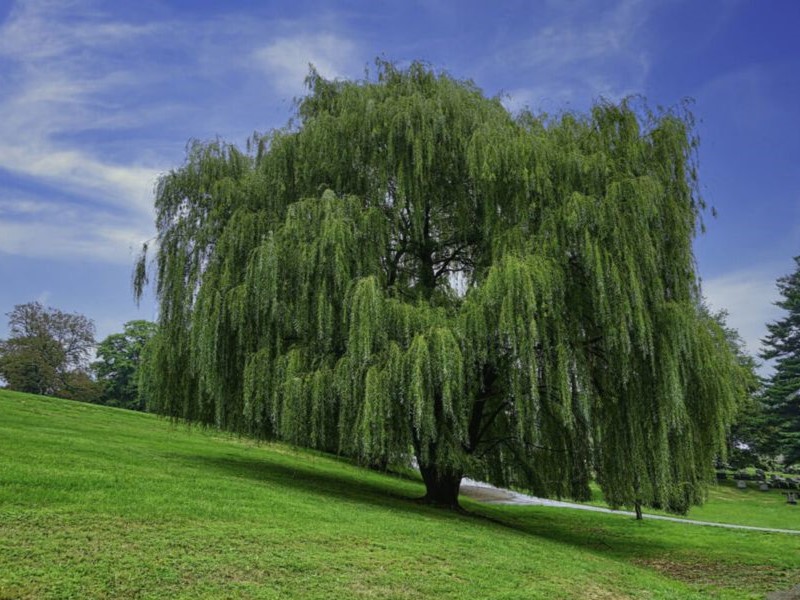
Weeping willow “salix babylonica” tree in nature.
| Botanical name: | Salix babylonica |
| Family: | Salicaceae (willow) |
| Tree type: | Broadleaf deciduous tree |
| Foliage type: | Simple, linear-lanceolate with alternating leaf pattern |
| Growth habit: | Upright |
| Native habitat: | China |
| Distinctive feature: | Drooping branches |
Weeping willows are fast-growing, broadleaf deciduous trees native to China but have become widespread across Asia, Europe, and North America. Like most willow species, it grows near rivers, lakes, and ponds
It’s popular for its drooping branches and yellowish twigs that are in the hanging position—making it appear dramatic and sentimental. Its leaves are long and narrow and have a silken texture on both sides. If in favorable conditions, weeping willows grow up to 65 ft (20 m) tall.
Then in autumn, the green leaves of weeping willows turn golden yellow before they fall off—providing a stunning look in your bonsai garden.
Weeping Willow Varieties Cultivated for Bonsai
There are hundreds of willow species worldwide, but weeping willow (salix babylonica) is one of the most preferred types in bonsai art due to its attractive and suitable features.
However, if you can’t get a weeping willow species or want to cultivate a different one…
Here are two similar willow varieties you can grow as a bonsai:
- Salix alba ‘tristis’ (white willow)
- Salix x sepulcralis ‘chrysocoma’ (golden weeping willow)
These three willow varieties are fast-growing trees, so you can practice bonsai cultivation techniques a few years after initial training. The only downside is that they have a shorter lifespan of approximately 25 years as a bonsai specimen compared to other bonsai species.
Growing weeping willow as bonsai
The best, easiest, and fastest way to propagate weeping willows is from cuttings. Since it’s a fast-growing tree, they develop roots fast as well. Even a large and thick part of the tree can grow roots if treated well.
Here are ways you can propagate a weeping willow miniature tree:
- Plant a branch cutting in moist soil for a few weeks.
- Soak the lower end of the cutting in a glass of water for several days.
How to Care for a Weeping Willow Bonsai Tree
A weeping willow miniature tree requires substantial training since it’s fast-growing and has long, dramatic branches. It’s also quite high-maintenance and sensitive —making it suitable for intermediate bonsai enthusiasts with adequate knowledge and skills.
If you want to cultivate one, here’s a complete weeping willow miniature tree care guide:
Quick general care guide for weeping willow miniature trees:
- Positioning: Place outdoors year-round.
- Watering: Water every time the soil becomes slightly dry.
- Feeding: Apply lower-nitrogen fertilizer during the growing season.
- Pruning: Prune as necessary during the spring and winter months.
- Wiring: Wire and bend in late spring after pruning for convenience.
- Repotting: Repot every year in the spring when the buds begin to swell.
- Overwintering: Move to an unheated, protected area during cold winters.
I. Positioning
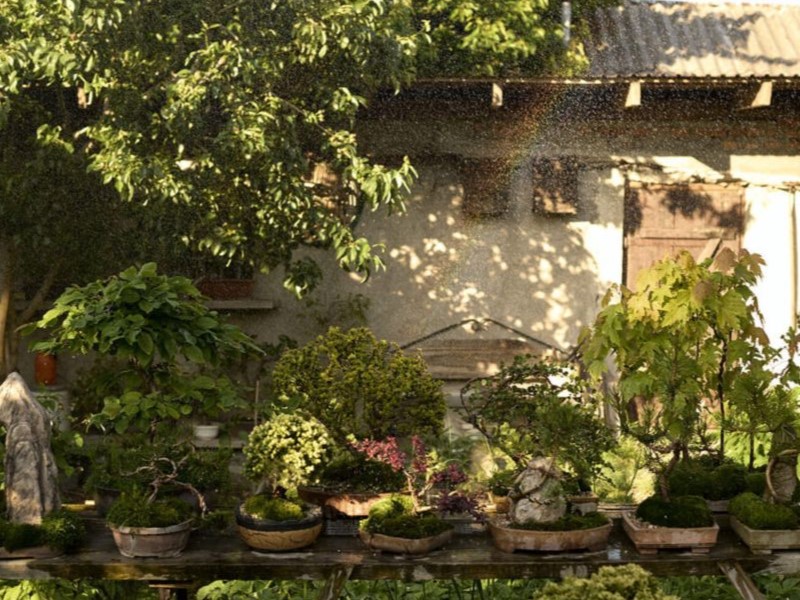
Weeping willow miniature trees are quite hardy species. They thrive being outdoors, even during hot summer days.
Thus, during the growing season (spring to fall), position your weeping willow bonsai in an area outside with direct sunlight. If possible, choose a spot with a temperature range of 80-90°F (26-32°C) during the peak months.
If you live in a region where the temperature reaches 3-digit in Fahrenheit (>37.7°C), keep your bonsai plant in full sun outdoors but provide partial shade during the peak hot hours of the day.
Here are some ways you can do that:
- Install a garden shade net.
- Place your bonsai in an outdoor greenhouse.
- Move your tree to your porch or a similar area.
II. Watering
Regular weeping willow trees that live in nature grow near bodies of water, so they are accustomed to having moist soil. Hence, your weeping willow miniature tree requires frequent watering, especially in seasons when its water intake is high.
Like most deciduous bonsai species, you should water your weeping willow miniature plant once the soil dries slightly. Pour water on it until the water runs out of the bonsai pot drainage holes.
Watering weeping willow based on the season
A. In spring
During this time, your weeping willow miniature plant starts to grow new buds and catkin flowers, increasing its water needs.
Check on your bonsai at least twice a day and water as needed to keep the soil moist. Also, pour the water from the nebari (surface roots) to prevent damaging the catkins and swelling buds.
B. In summer
As the temperature rises, your bonsai craves more water. Hence, you should water it at least twice daily to keep its soil consistently moist during hot summer days. Check on it in the morning, noon, and early evening and water as needed.
Tip: To keep the humidity high, mist the foliage once a day or use a humidity tray (a shallow bowl filled with standing water).
C. In autumn
In early autumn, your weeping willow miniature tree prepares to drop its leaves and enter its dormancy period—relatively decreasing its water needs.
That said, you should decrease your water frequency to at least once daily.
D. In winter
Your bonsai plant is dormant and bare during winter, so you don’t need to water it as frequently as in previous months.
Water it fewer times a week, but never let the soil dry out, as this can deteriorate the health of your bonsai.
III. Fertilizing
Weeping willow miniature trees receive fewer nutrients than normal trees due to being planted in restricting shallow bonsai pots. To compensate for the lost natural nutrients, you should fertilize your bonsai plant regularly.
Apply slow-release solid fertilizer on your weeping willow miniature tree a few times a month throughout the growing season to boost new growth. Depending on your fertilizer product, you may have to apply it weekly, bi-weekly, or monthly. Just follow the application instructions on the product packaging.
Foliar feeding also helps to stimulate root growth. If you want to develop the roots of your bonsai, apply liquid fertilizer every two weeks or so, depending on the product.
Tip: Choose a bonsai fertilizer with lower nitrogen content for your weeping willow bonsai tree.
Nitrogen encourages the development of the upper part of the plant, specifically leaves and internodes. High nitrogen content can encourage the growth of large leaves and long internodes that are not very suitable for bonsai cultivation.
Feeding weeping willow based on their needs
The amount and type of fertilizer you should use should depend on the current state of your bonsai tree.
Depending on its growth stage, here’s the type of fertilizer you should use:
A. For health enhancement
Pick a fertilizer with higher potassium content to boost the tree’s overall health and growth.
B. For general development and refinement
Choose a fertilizer with a balanced NPK value for good growth. However, if you want to boost its catkin flower production in the spring, get one with a higher phosphorus content.
IV. Pruning
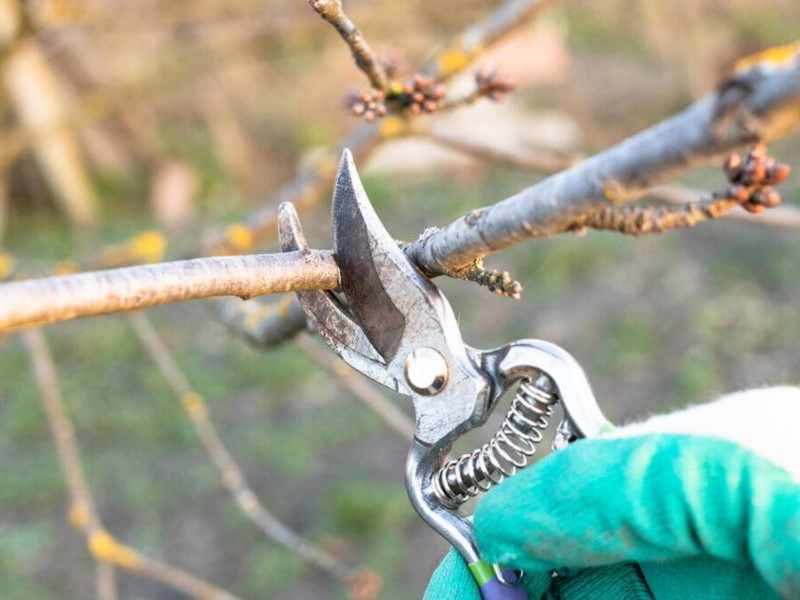
Weeping willows are fast-growing species that can easily extend their twigs 12 inches (30 cm) a month. That being said, you must perform regular pruning on your weeping willow miniature tree to size down its rapidly growing branches and maintain the shape of the entire tree.
Unlike other bonsai tree species, weeping willows can be pruned twice a year—during the winter (when it’s bare) and summer (when new buds appear).
In winter
Once all the leaves have fallen off, prune the excess shoots on hanging twigs back to 1 to 2 buds to prepare for new growth in the next growing season.
If you want to remove older branches or unwanted shoots growing in unwanted positions, you may also do so during these months.
In summer
Again, once the new shoots have elongated, trim them back to a manageable length.
When cutting larger branches that create deep wounds, cover them with cut paste to encourage faster and more seamless healing.
V. Wiring and Bending
More than keeping them in your desired shape, wiring weeping willow miniature plants is necessary because although their foliage naturally hangs downward, new shoots tend to grow upwards first to try to reach their genetically predetermined height.
Start wiring and bending your weeping willow miniature tree in June to keep the hanging twigs in position. However, if you want to bend older branches, it’s best to do it in spring (when it’s actively and rapidly growing) using guy wires for better support.
Use an aluminum bonsai wire on your weeping willow miniature plant and apply it at a 45 to 50 degrees angle for greater support.
Warning: Constantly check on the bonsai wires on your plant several weeks after application to prevent wire bits that can cause ugly scarring.
VI. Repotting
Weeping willows have strong and rapid root growth, so regularly repotting them is necessary to avoid the roots filling the whole bonsai pot—which can suffocate the plant and cause it to weaken eventually.
Since it’s a fast-growing species, repot your weeping willow miniature tree every year when needed—once the roots start circling around the topsoil or soil mass. Do it in early spring when the new buds begin to swell.
Root pruning
To keep it “miniature,” prune not more than ¼ of the roots to control the tree’s rapid growth and encourage smaller new root growth.
Weeping willows are quite hardy, meaning you can prune them strongly without problems.
Soil requirements
Weeping willow trees in nature grow in various soil types, such as moist, loamy, sandy, alkaline, or acidic soil. That means you can also pot your bonsai tree in various types of soil.
However, most weeping willows prefer a slightly alkaline environment. You may add limestone or pumice to your bonsai soil mixture so that your bonsai can thrive better. Adding these coarse substrates to your mix also creates air pockets in the soil, promoting good drainage.
VII. Winter Care
A weeping willow miniature tree needs winter protection, especially if the climate is too cold or cool to tolerate.
However, if your region only experiences mild winters, you can keep your weeping willow miniature tree outdoors as long as you cover its surface soil with layers of mulch and place it in a spot that protects it from wind, rain, or snow.
Here are easy ways you can overwinter your weeping willow miniature tree:
- Place it in a greenhouse or cold frame.
- Move it into an unheated shed or garage.
VIII. Pests and Diseases
If not treated well or placed in an unfavorable environment, your weeping willow miniature tree can get infested by various pests and diseases, particularly the following:
- Aphids
- Scales
- Canker
- Gall mites
- Caterpillars
- Gall makers
- Willow borer
Most pests mentioned above can be easily treated with pest-specific pesticides. Just make sure to follow the application instructions to ensure effective treatment.
If the infestation or disease infection is severe, contact a pest control professional for the proper and right treatment.
Conclusion
A mature weeping willow bonsai tree can no doubt make your garden look more stunning and sentimental because of its dramatic hanging branches and drooping leaves.
Although it’s quite a hardy species, you still need to exert some effort to maintain its shape for many years. For once, you’d need to do more regular pruning and repotting on your weeping willow miniature tree than other specimens.
Nonetheless, growing a weeping willow miniature tree can be exciting and rewarding when executed well.


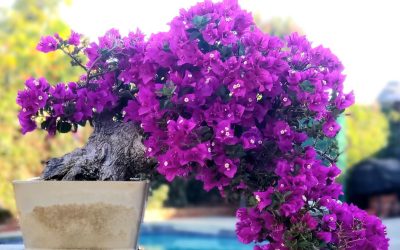
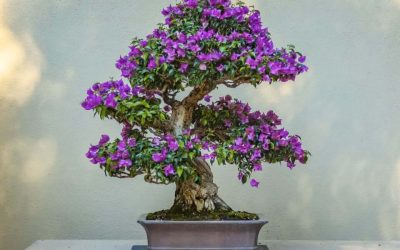
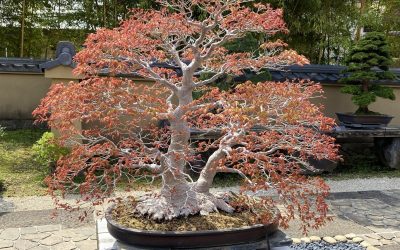
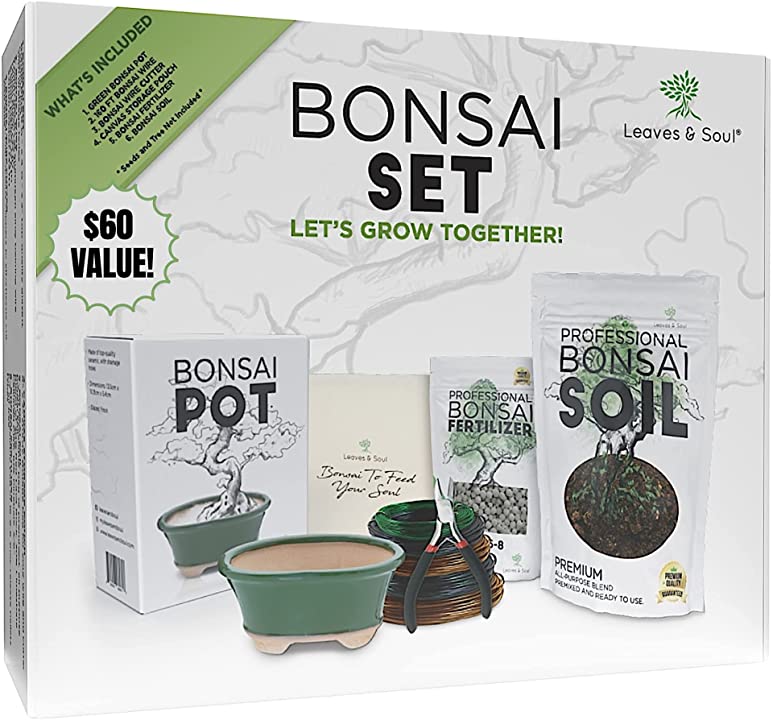
0 Comments